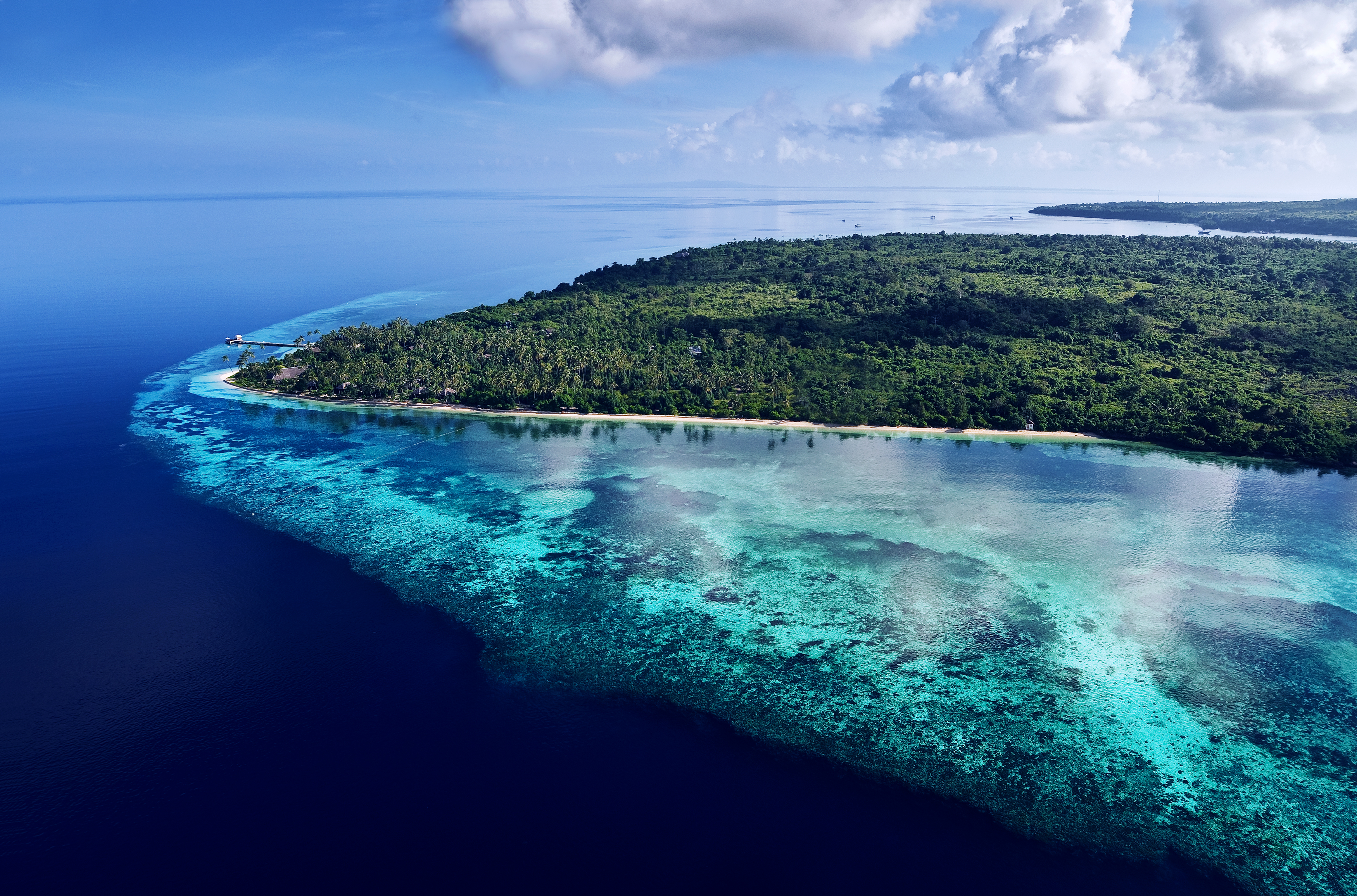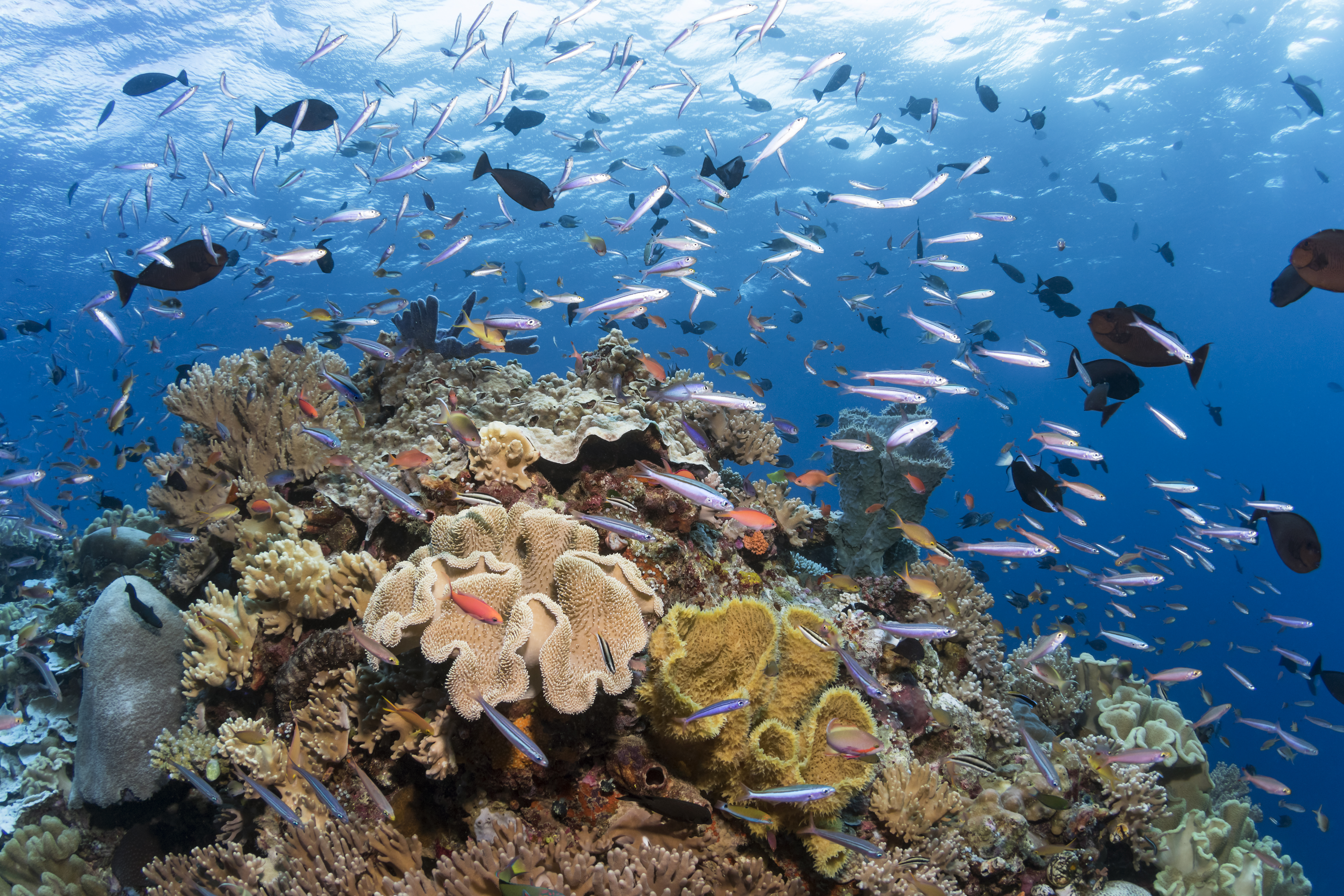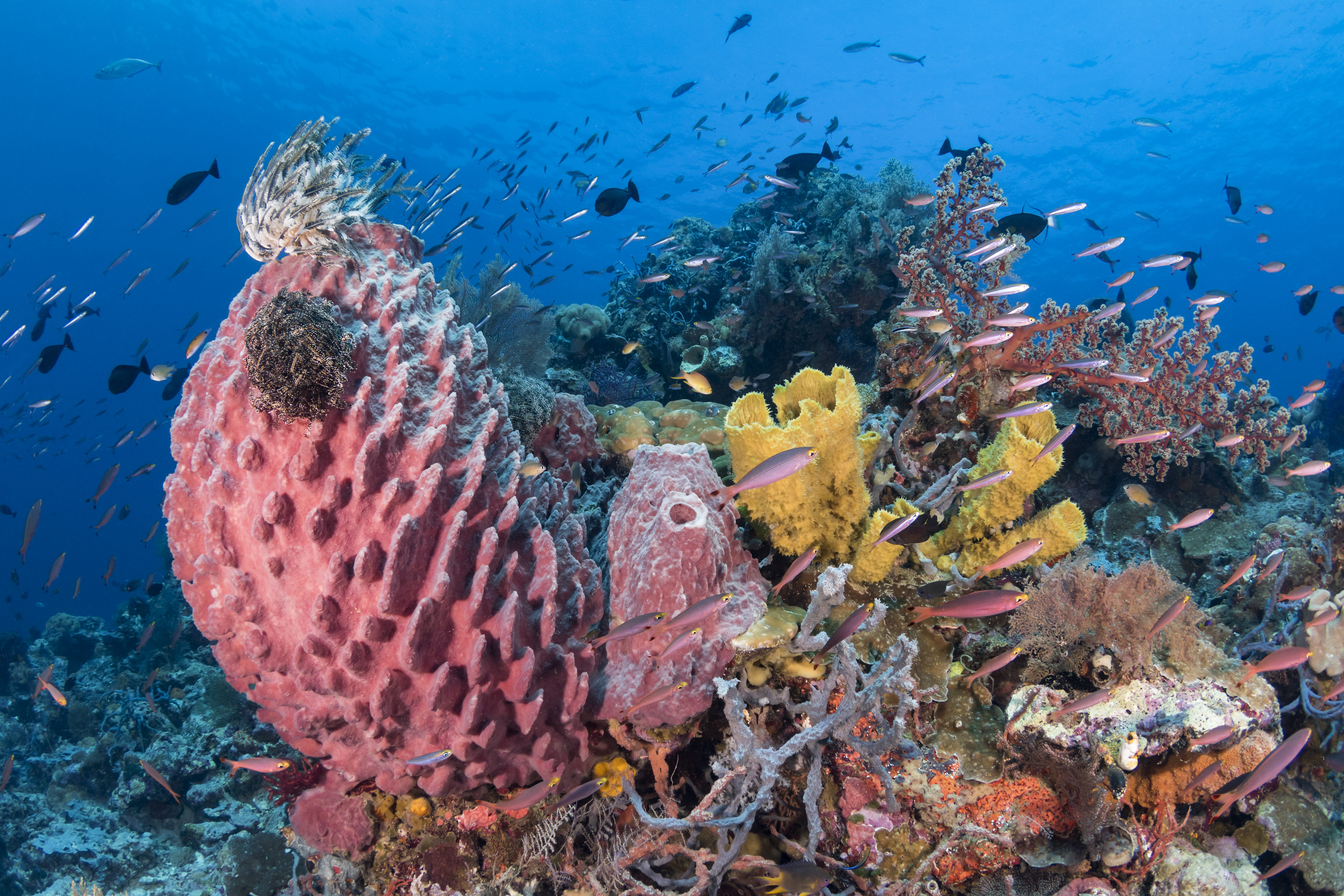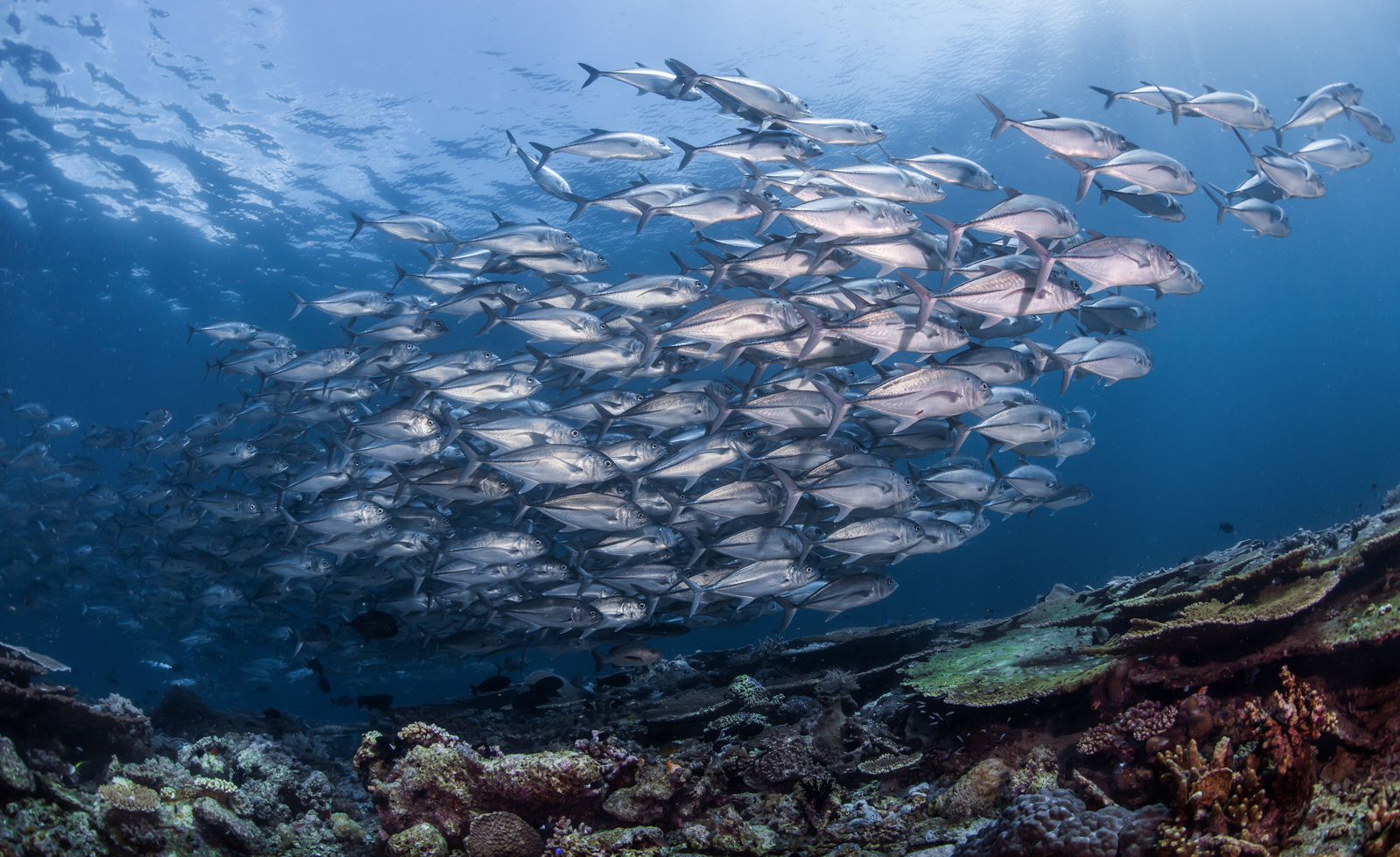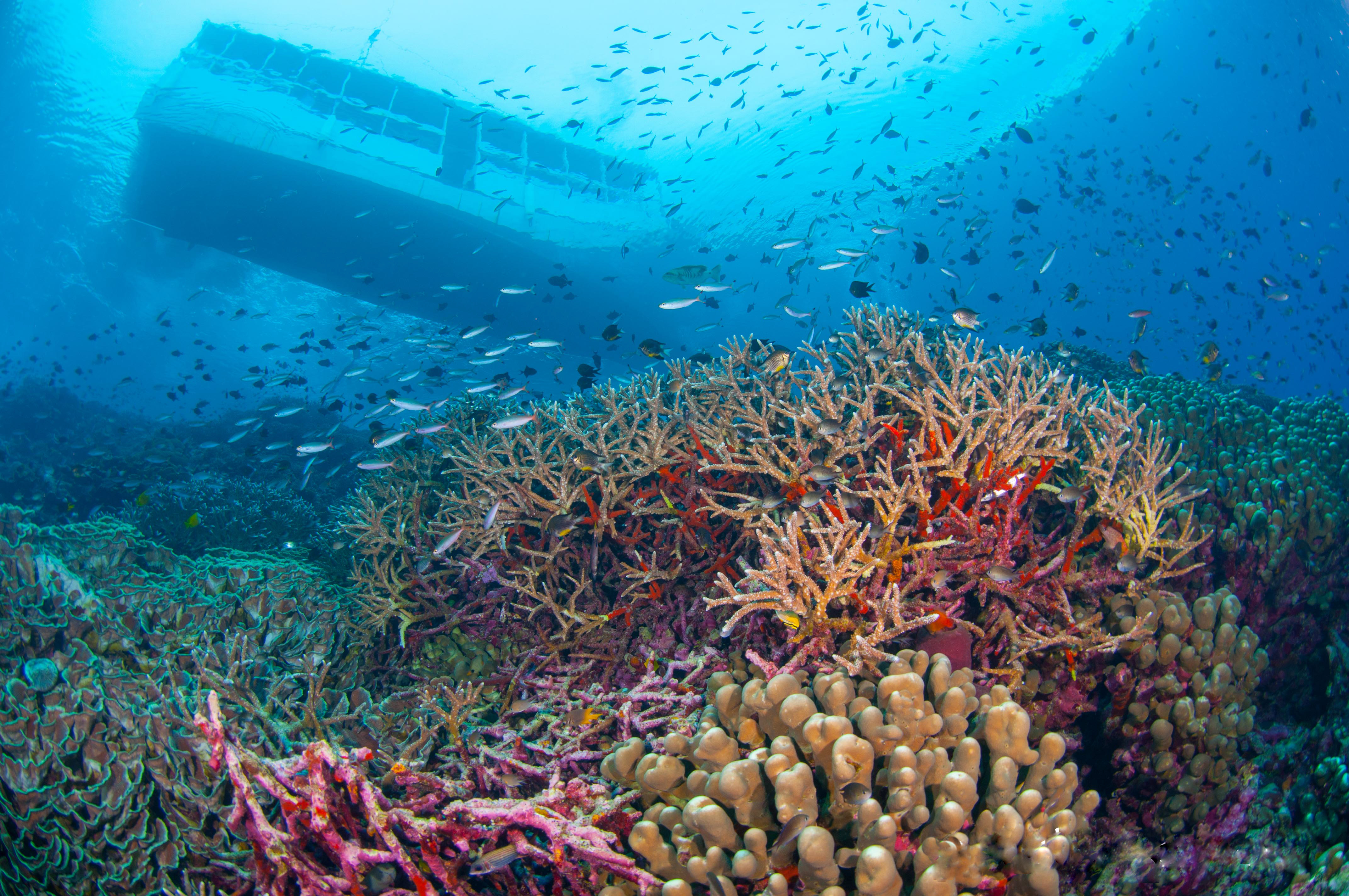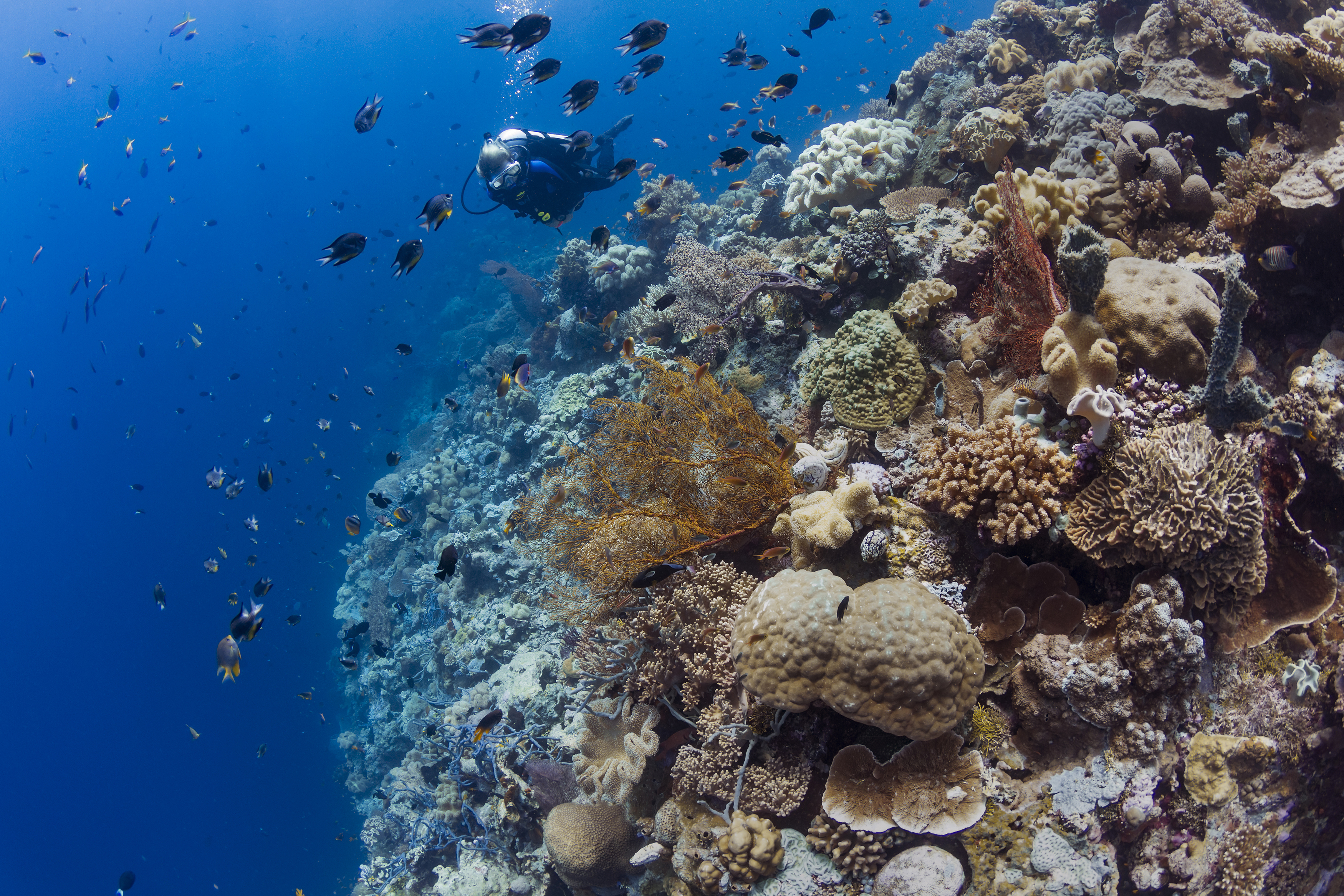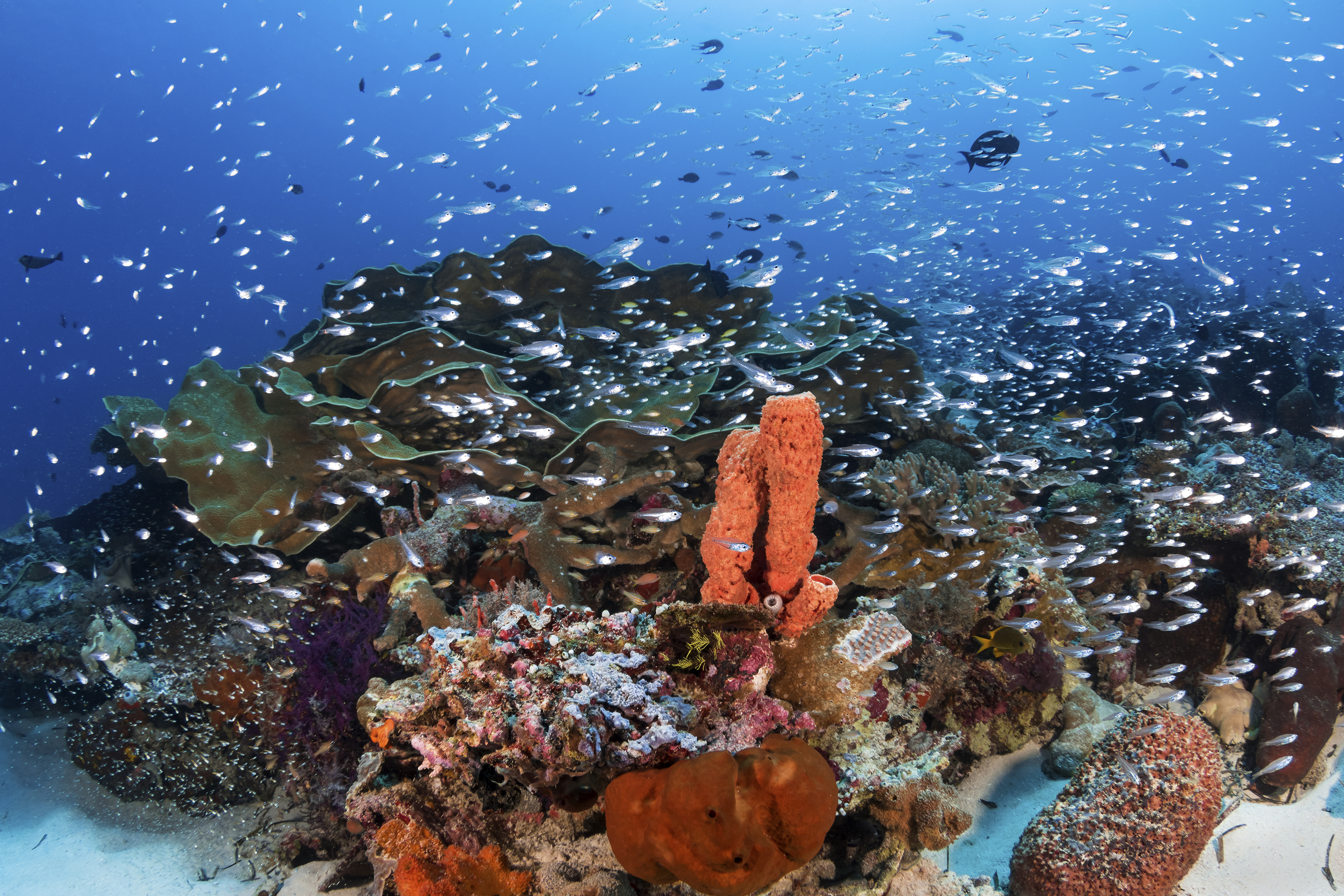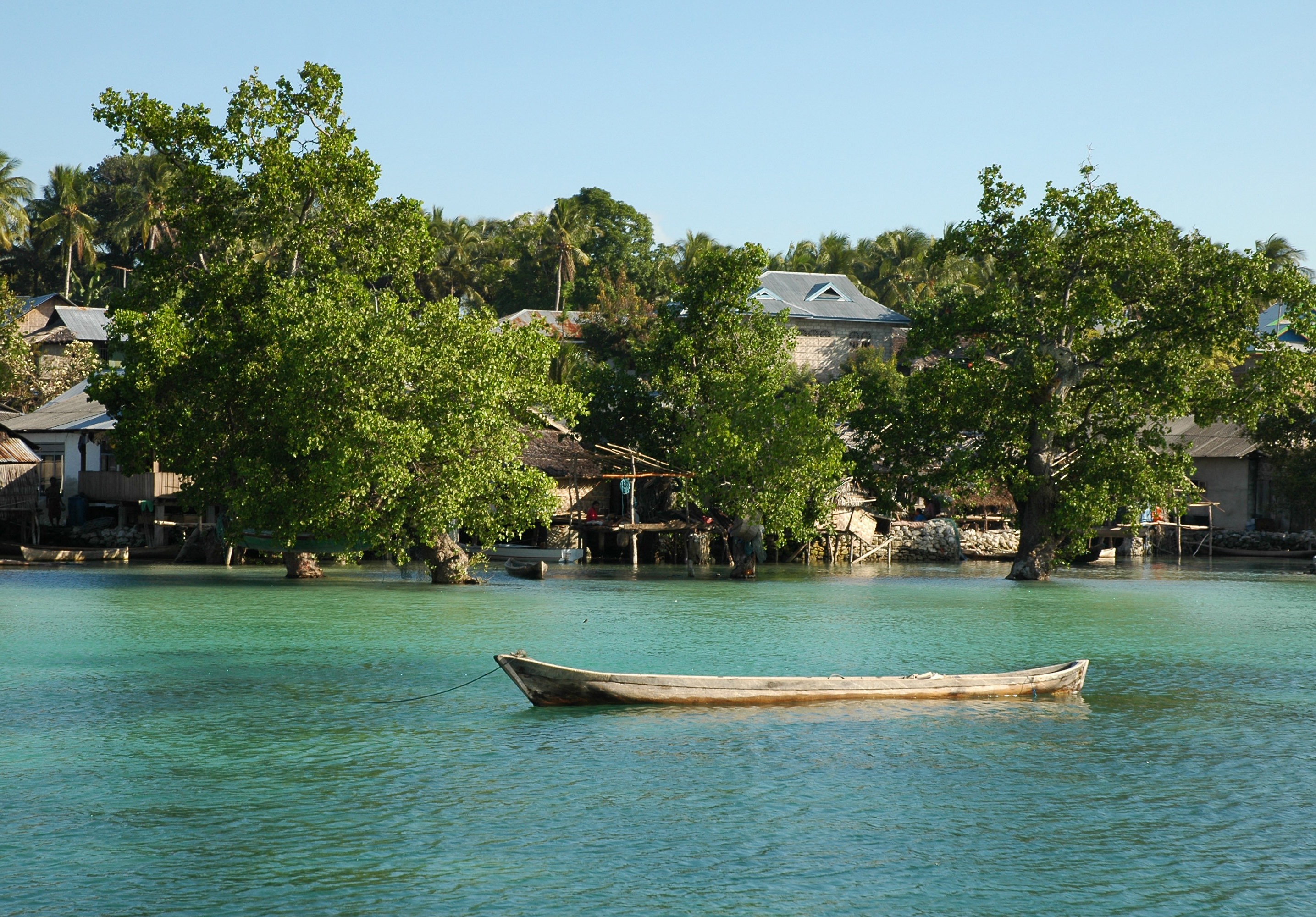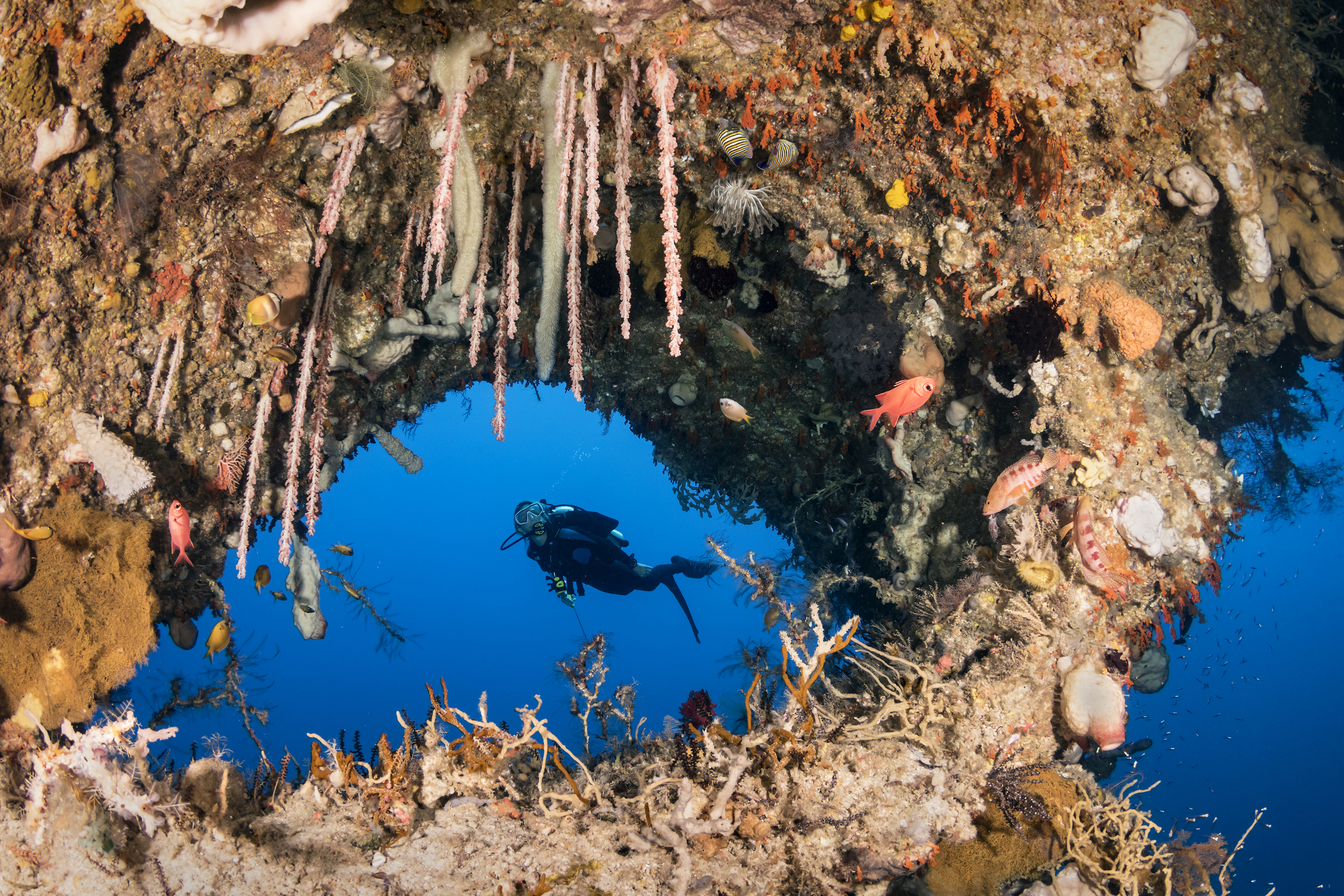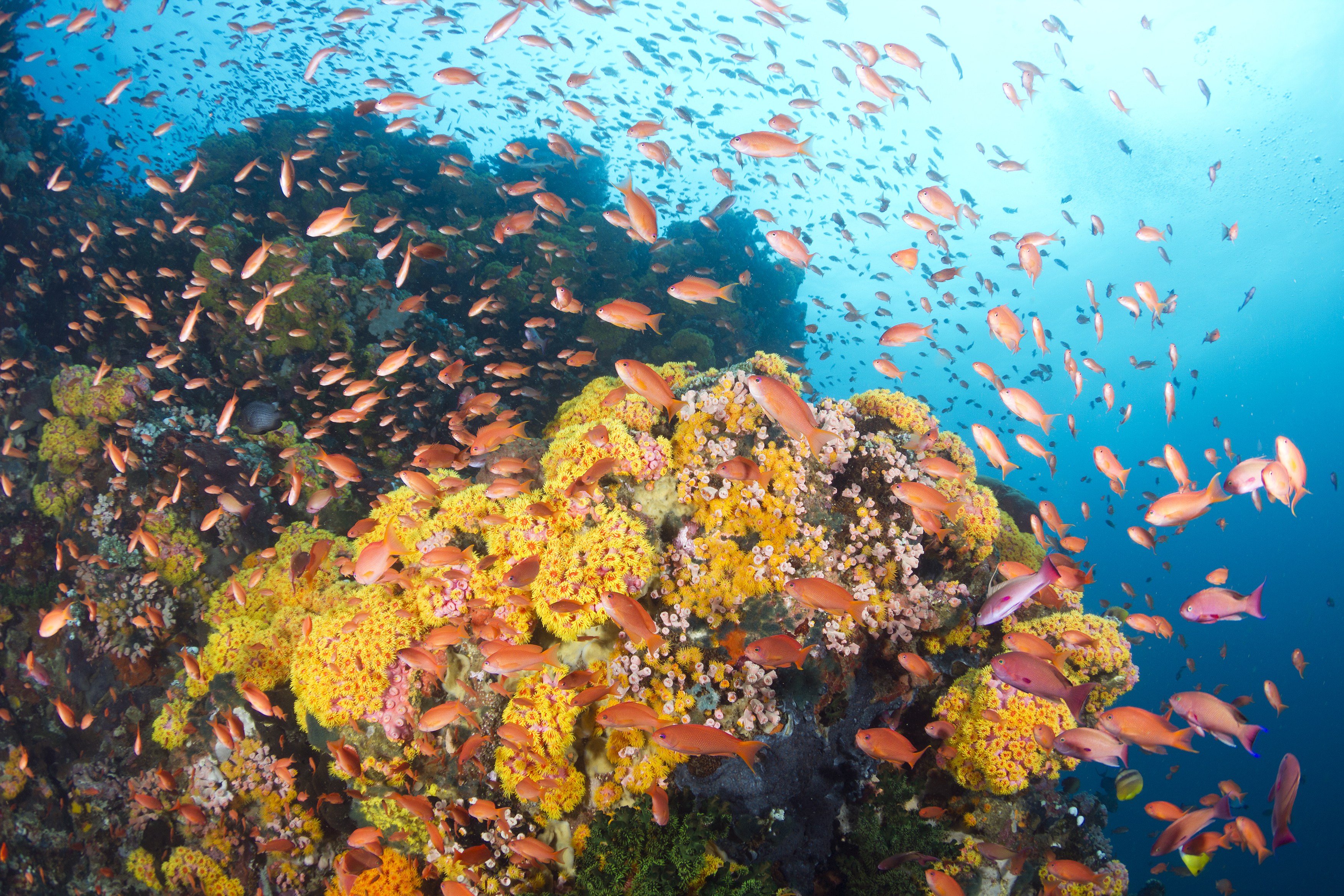Who established the protected area and what parties were involved?
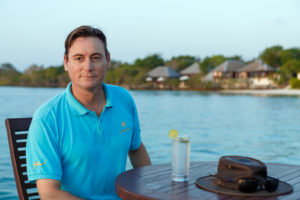
Conservation Program as a pilot project in 1997, two years
after establishing what is now one of the world’s premier
dive destinations. (Photo courtesy of Wakatobi Dive Resort)
Lorenz Mäder, the founder of Wakatobi Dive Resort, worked with local leaders and village elders to establish the Collaborative Reef Conservation Program. The program was designed to motivate the people living in the Wakatobi region to take an active role in protecting the marine ecosystem. Gaining regular payments and alternative employment in the resort, the villagers realized that it is a smarter economical use of their natural resource to let sections of the reefs be untouched for the tourist to enjoy looking at the fish. With proper management, jointly with the dive resort, everyone stands to gain more from tourism than just from fishing, especially in a location like Wakatobi.
When was the protected area established?
The Collaborative Reef Conservation Program began as a pilot project in 1997, which turned 3.7 miles (6 km) of reef into an effective no-fishing sanctuary. As the success of this project became clear, the protected zone was extended. Today it covers more than 12 miles (20 km) of reef.
Where is the protected area located and how big is it?
These privately sponsored reef sanctuaries lie within the Wakatobi Marine Reserve in Southeast Sulawesi, Indonesia. The National Marine Park area was recently designated as a UNESCO World Biosphere Reserve, and is recognized as one of the most biodiverse marine ecosystems on Earth. Currently, the program includes 17 communities around Wakatobi Dive Resort and covers 12.5 m (20 km) of the best-protected reef structures within the National Marine Park.
Why did your team decide to establish the protected area?
We believe in a solid integration of conservation into our business model and accept that keeping the marine environment intact is the foundation of our business. The enjoyment of our guests is an integral part of a sustainable dive operation.
Because year after year Wakatobi Dive Resort is sticking to this commitment, it has earned the trust and the endorsement of a large majority of the population, of the village elders and island leaders. We don’t know a more effective and cost-efficient model for reef conservation in this environment.
Why did the community agree to establishment of the protected area? What benefits do they receive?
Over the years, substantial investment has gone into keeping the reefs shielded from destructive fishing methods. Every month, each of the 20 villages obtains a cash amount in form of a ‘reef-lease’ payment into their communal budget. This amount is meaningful enough to motivate them to keep intruders away from their revenue-generating “prime underwater real estate.” It convinces them, and all community members, to stick to the agreed-upon respective non-fishing zones. For that purpose, the amount must be a multiple of the potential fishing yield, as you can easily imagine. In addition, the village nearest to the resort obtains its electrical power supply from the resort.
What marine life will divers find in the protected area?
The Coral Triangle, as this region is called, is defined by Indonesia, Malaysia and the Philippines. It’s home to more than 600 coral species, at least 3,000 varieties of fish, and an even greater number of invertebrate species. Everything from reef sharks, rays, whales and turtles, to crocodilefish, cuttlefish, stonefish, nudibranchs, shrimp, crabs, and pygmy seahorses live within the Wakatobi reef system.
What changes and improvements have you seen in the protected area since it was established?
Overall, the protected reefs are in better shape than before the sanctuaries were established. They have turned into a huge, sheltered breeding area. There are so many fish that the fisherman now catch more swimming out at the fringe of the protected area than they caught before in the entire area. Most locals understand now the benefit of reef-resource management, which includes more income for the fisheries.
What is the importance of the protected area to your dive operation?
The protected reefs include some of the world’s most pristine and beautiful marine ecosystems. These are therefore our most important business assets, which also provide the financial means to sponsor the resort’s conservation initiatives.
What challenges have you faced in establishing and maintaining it?
It took years of steady support and communication to establish solid trust and motivate the majority of the local population. By today, compliance with the rules in the sanctuaries is 95 to 99 percent, depending on how close the reef section is to the resort and patrol posts. Also it was not easy for a small, private business to maintain steady reef-lease payments throughout economical downturns. Still, the business approach proved to be by far the most successful and economical conservation approach in the area.
Anything else you’d like to share?
Going forward, we will more carefully explain to our guests what we are doing in terms of conservation without being too serious for a holiday setting. We must balance many interests. Conservation is a serious matter, and has more to do with drawn-out negotiations, attention to detail, and management than with putting hope in changing habits by preaching to and educating adults. It is neither romantic nor achieved by putting out a few catchy slogans. That is why we prefer to just do it rather than speak about it and let our guests enjoy their precious holidays without being bothered by the complexities involved in keeping the marine environment pristine.
If a guest shows an interest, we are always delighted to go deeper and explain. We find that it is often those among our guests who are themselves professional communicators, or have built their own companies, who are intrigued by this successful and effective conservation approach and take the time to understand more. Either way, anyone who comes to Wakatobi endorses conservation through his or her enjoyment, and that is the way we believe it should be.
Location:
Wakatobi Dive Resort is in Southeast Sulawesi, Indonesia. It lies in the remote Wakatobi archipelago, formerly called TukangBesi islands, on the edge of Indonesia’s Banda Sea. It’s 665 miles (1,070 km) northeast of Bali.
Contact: [email protected]
High season/low season:
There is no unsuitable period or season for diving in Wakatobi. The climate is drier than in other parts of Indonesia, and the location is quite protected by the surrounding reefs and islands.
Weather and water temperatures:
Wakatobi is a more arid region of Indonesia and air humidity can be as low as 65 to 75 percent. For 90 percent of the year, air temperatures range between 78.8 and 86 F (26 to 30 C).
The overall water-temperature range is ideal for coral growth and there is very little to no coral bleaching in Wakatobi. The warmest water occurs in October, ranging from 82 to 86 F (28 to 30 C). The coolest water occurs in the latter half of August, with a minimum of 78 F (26 degrees C). March until May averages 82.4 F (28 C); June averages 81 F (27 C); July 26 C (78.8 F); September is between 78 and 81 F (26 to 27 C); and from November until March, the temperature averages (82.4 F to 85 F (28 to 29 C).
Underwater visibility is mostly between 20 m and 50 m, with an average of 35 m or 100 feet. No rivers nor lakes bring sediments, so rain does not affect the visibility. Follow Wakatobi on Facebook or on their blog, Wakatobi Flow.
By guest author Karen Stearns


